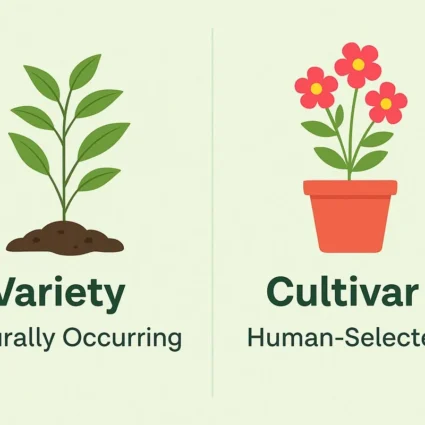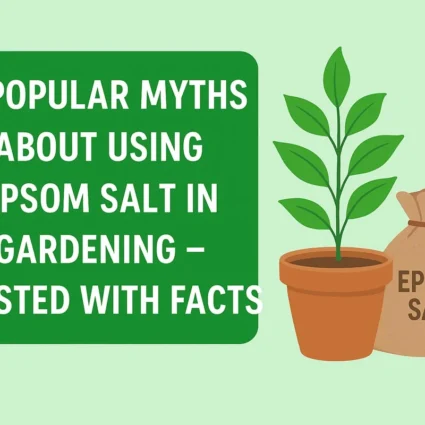
Exploring the Diverse Papaya Varieties Cultivated in India: A Fruitful Journey
Papaya, often referred to as the “fruit of angels,” is not just a tropical delight but also a nutritional powerhouse. Among the various countries cultivating papaya, India stands out for its diverse range of papaya varieties. In this blog, we embark on a flavorful journey through the lush fields of India to discover the rich tapestry of papaya varieties that adorn its landscapes.
The History of Papaya Cultivation in India:
Papaya, native to tropical America, found its way to the Indian subcontinent centuries ago, likely through trade routes. Over time, it adapted well to the Indian climate and soil conditions, becoming a staple in many regions. Initially grown in home gardens, papaya cultivation gradually expanded to commercial scales, contributing significantly to the agricultural landscape of India.
The Diversity of Papaya Varieties:
India boasts a remarkable diversity of papaya varieties, each with its unique characteristics in terms of size, shape, color, taste, and nutritional profile. Some of the popular papaya varieties cultivated in India include:
Red Lady:
Known for its vibrant red-orange flesh and sweet flavor, Red Lady is one of the most sought-after papaya varieties in India. It is prized for its high yield and excellent shelf life, making it a favorite among farmers and consumers alike.
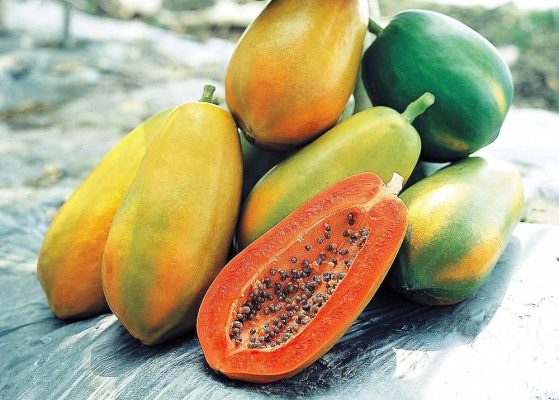
Also Read This :9 Must-Plant Flowers for a Blooming Garden: Prepare for Summer Splendor
Pusa Delicious:
Developed by the Indian Agricultural Research Institute (IARI), Pusa Delicious is renowned for its large size, delicious taste, and attractive golden-yellow flesh. It is favored for its uniformity in size and shape, making it ideal for commercial cultivation.

Also Read This :Maximize Growth: Complete This Task in March for Fivefold Plant Growth!
Coorg Honeydew:
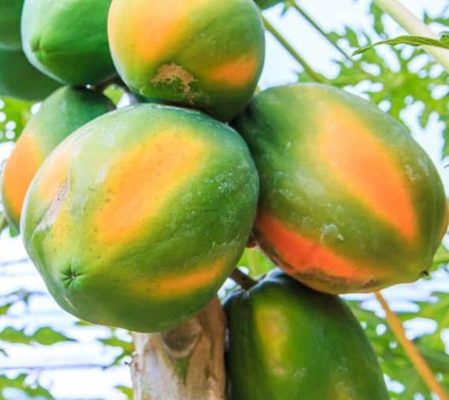
Originating from the lush hills of Coorg in Karnataka, Coorg Honeydew papaya is celebrated for its unique honey-like sweetness and aromatic flavor. Its small to medium-sized fruits with orange flesh make it a popular choice among connoisseurs.
Also Read This :Boost Your Garden: Transforming Cow Dung into Potent Compost in 30-40 Days!
Solo:
As the name suggests, Solo papayas are known for their solitary fruiting habit, producing single fruits without clustering. These papayas are characterized by their elongated shape, smooth skin, and sweet, succulent flesh, making them a favorite for fresh consumption.

Also Read This :Transform Your Curry Leaf Plant into a Verdant Forest Haven with This Magical Ingredient
Sunrise Solo:
Another variant of Solo papaya, Sunrise Solo, is prized for its high productivity, disease resistance, and early maturity. Its medium-sized fruits with deep orange flesh and sweet flavor make it a preferred choice for both domestic and export markets.

Also Read This :Exploring the Top 21 Mango Varieties That Make India the Ultimate Mango Paradise
Washington:
Washington papaya is known for its large, round fruits with orange flesh and sweet taste, making it a popular choice among farmers and consumers alike.
Taiwan:
Taiwan papaya, also known as Tainung or Tainan, is valued for its high yield, disease resistance, and firm, sweet flesh, making it well-suited for processing and export.
Also Read This :Maximizing Mango Yield: Tips for Enhancing Growth and Fruit Production
Honey Dew:
Honey Dew papaya, with its smooth, greenish-yellow skin and sweet, juicy flesh, is a favorite for its refreshing taste and versatility in culinary applications.
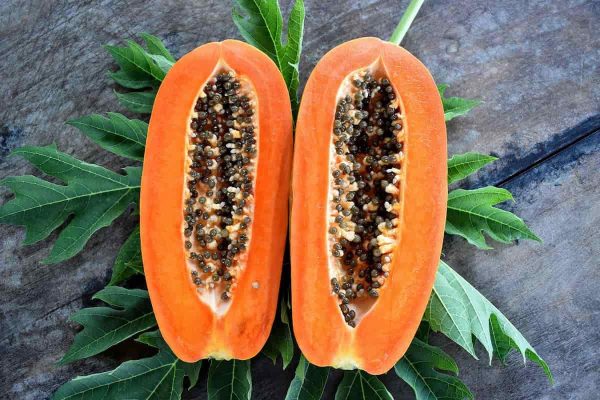
Sunrise Solo Red:
Similar to Sunrise Solo, Sunrise Solo Red papaya features deep orange flesh and sweet flavor, making it a sought-after variety for its visual appeal and taste.
Also Read This :5 Easy Tips for Growing Beets in Pots: A Beginner’s Guide
CO-7:
Developed by the Tamil Nadu Agricultural University (TNAU), CO-7 papaya is known for its high yield, disease resistance, and uniform fruit size, making it a preferred choice for commercial cultivation in southern India.
Cultivation Practices and Challenges:
Papaya cultivation in India typically requires a warm, tropical climate, well-drained soil, and adequate water supply. Farmers employ various cultivation practices, including proper spacing, irrigation, fertilization, and pest management, to ensure optimal growth and yield. However, like any other crop, papaya cultivation faces challenges such as pest infestations, diseases, erratic weather patterns, and market fluctuations, which can impact production and profitability.
Also Read This :Five Simple Strategies for Prolonging the Blooms of Your Peace Lily Houseplants
The Nutritional Benefits of Papaya:
Beyond its delectable taste and culinary versatility, papaya offers a myriad of health benefits. Rich in vitamins, minerals, antioxidants, and dietary fiber, papaya is known to promote digestion, boost immune function, support heart health, and enhance skin health. It is also valued for its anti-inflammatory and anti-cancer properties, making it a valuable addition to a balanced diet.
In conclusion, the journey through the diverse papaya varieties cultivated in India unveils a tapestry of flavors, colors, and nutritional richness. From the succulent sweetness of Red Lady to the aromatic allure of Coorg Honeydew, each variety offers a unique sensory experience. As we celebrate the abundance of papayas gracing the fields of India, let us also appreciate the dedication of farmers who nurture these fruits with care and expertise, ensuring a bountiful harvest for generations to come.



